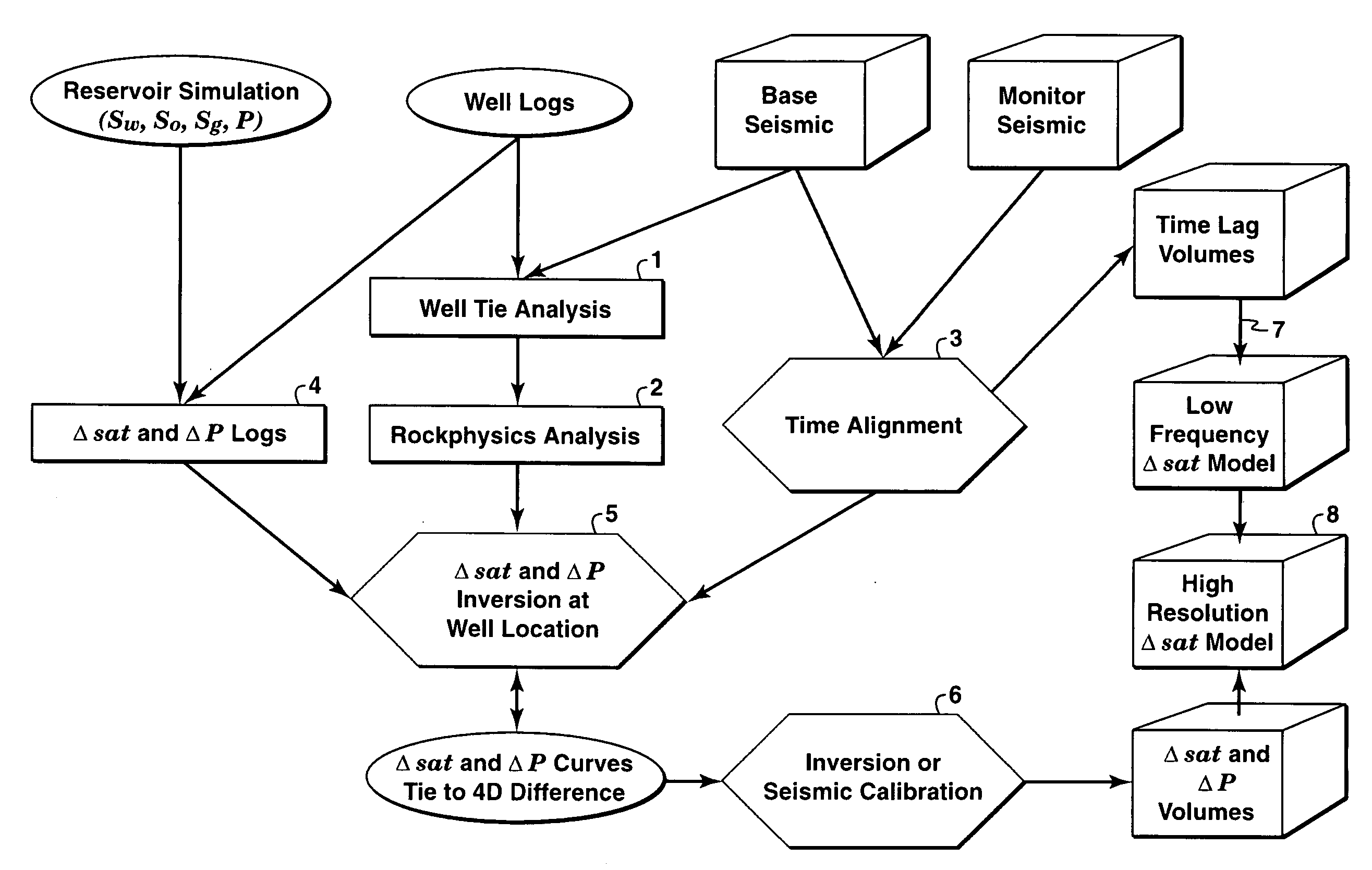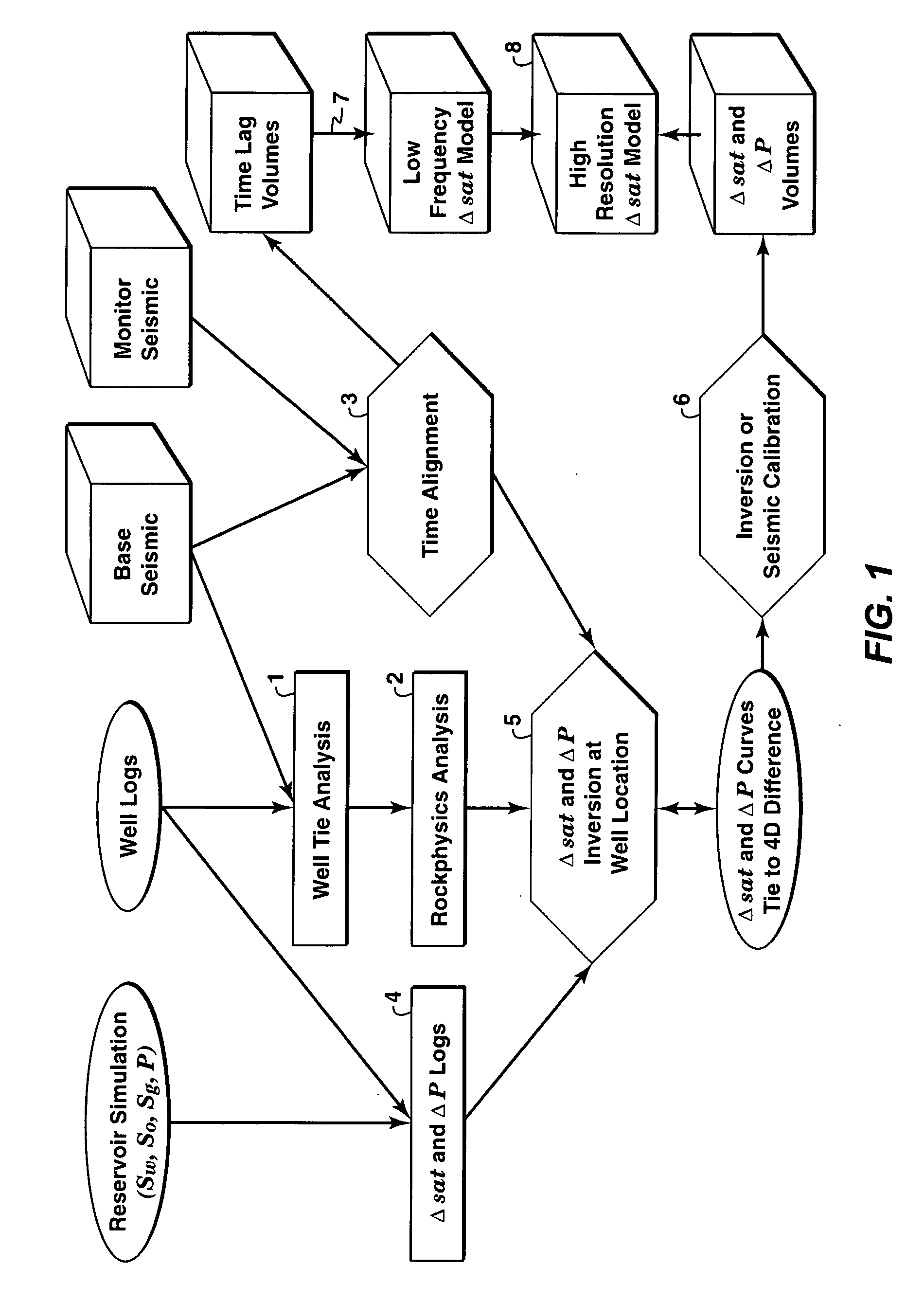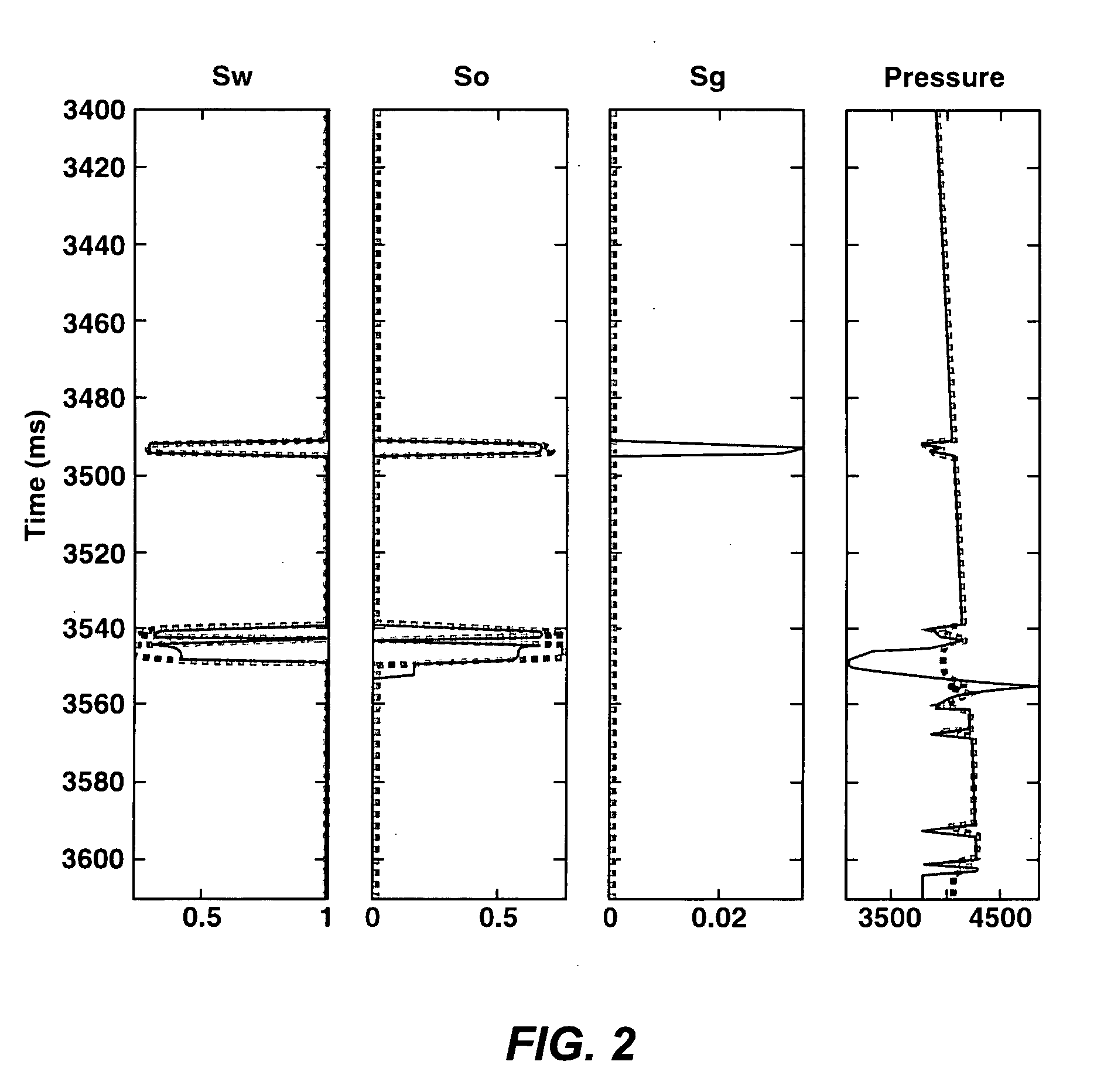Inversion of 4D Seismic Data
a seismic data and inversion technology, applied in seismic, instruments, measurement devices, etc., can solve the problems of reservoir compaction, side-lobe energy complicating interpretation of multi-cycle reservoirs, and uncertainty in rock parameter estimations (i.e. shale volume vsh and porosity ) from seismic data,
- Summary
- Abstract
- Description
- Claims
- Application Information
AI Technical Summary
Problems solved by technology
Method used
Image
Examples
example
[0043]The present inventive method was applied to a deepwater field where gas and water injection is used for both pressure maintenance and gas storage. Monitoring the gas and water movement is the main objective of 4D surveillance at this field. FIG. 2 shows the inverted saturation and pressure change curves at a well location. The solid lines correspond to the monitor survey, and the dashed lines the base survey. FIG. 3 plots synthetic 4D seismic difference (solid lines) versus actual 4D differences (dashed lines). The first track is a near angle stack and second track is a far angle stack. FIG. 3 shows that the fluid and pressure change inversion of the present invention (solid lines) is able to match actual differences very well for the near angle stack, and less well for the far angle stack (to be expected because of factors such as uncertainties in NMO stretch and more Q attenuation).
[0044]Using inverted logs at this field as target logs, the commercial software product Emerge...
PUM
 Login to View More
Login to View More Abstract
Description
Claims
Application Information
 Login to View More
Login to View More - R&D
- Intellectual Property
- Life Sciences
- Materials
- Tech Scout
- Unparalleled Data Quality
- Higher Quality Content
- 60% Fewer Hallucinations
Browse by: Latest US Patents, China's latest patents, Technical Efficacy Thesaurus, Application Domain, Technology Topic, Popular Technical Reports.
© 2025 PatSnap. All rights reserved.Legal|Privacy policy|Modern Slavery Act Transparency Statement|Sitemap|About US| Contact US: help@patsnap.com



